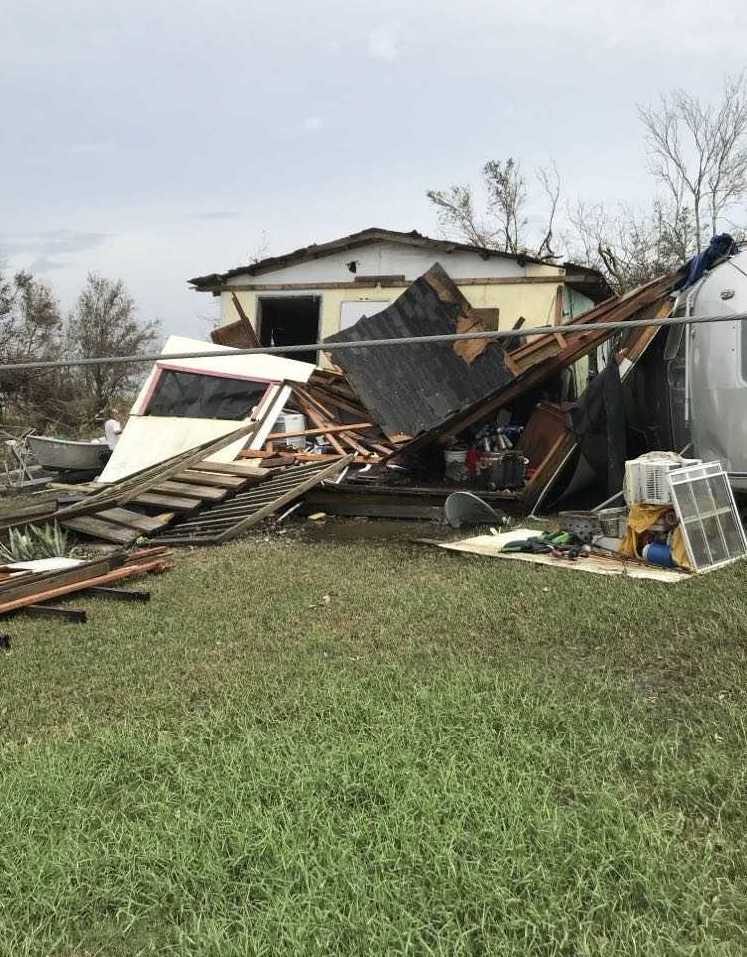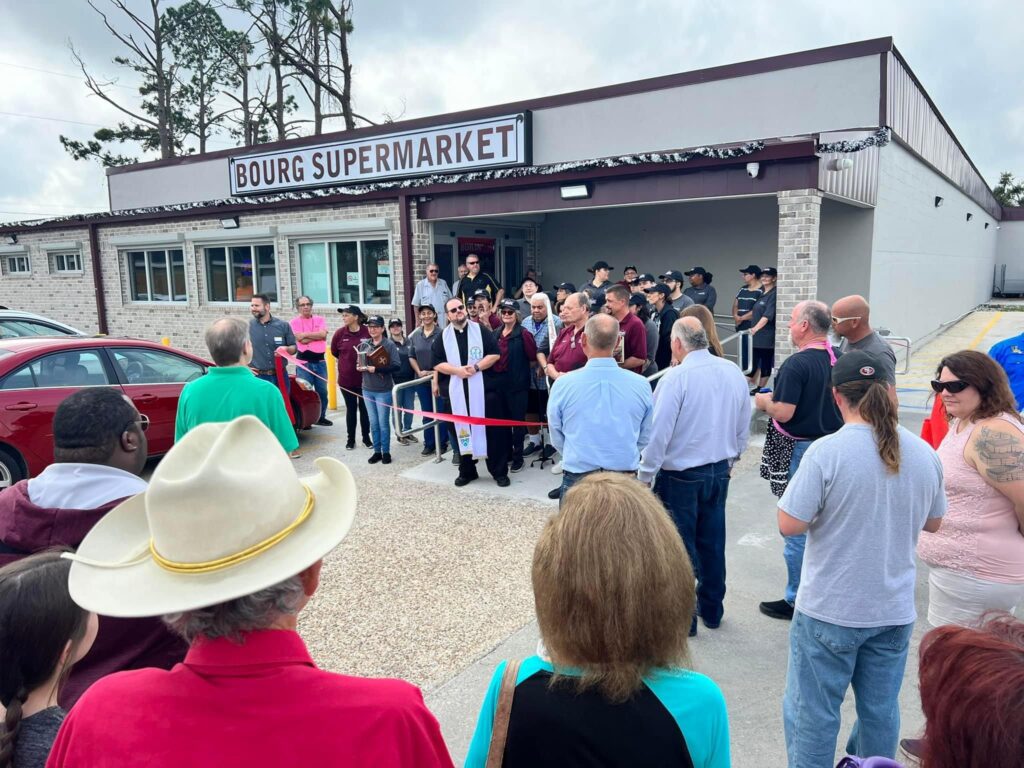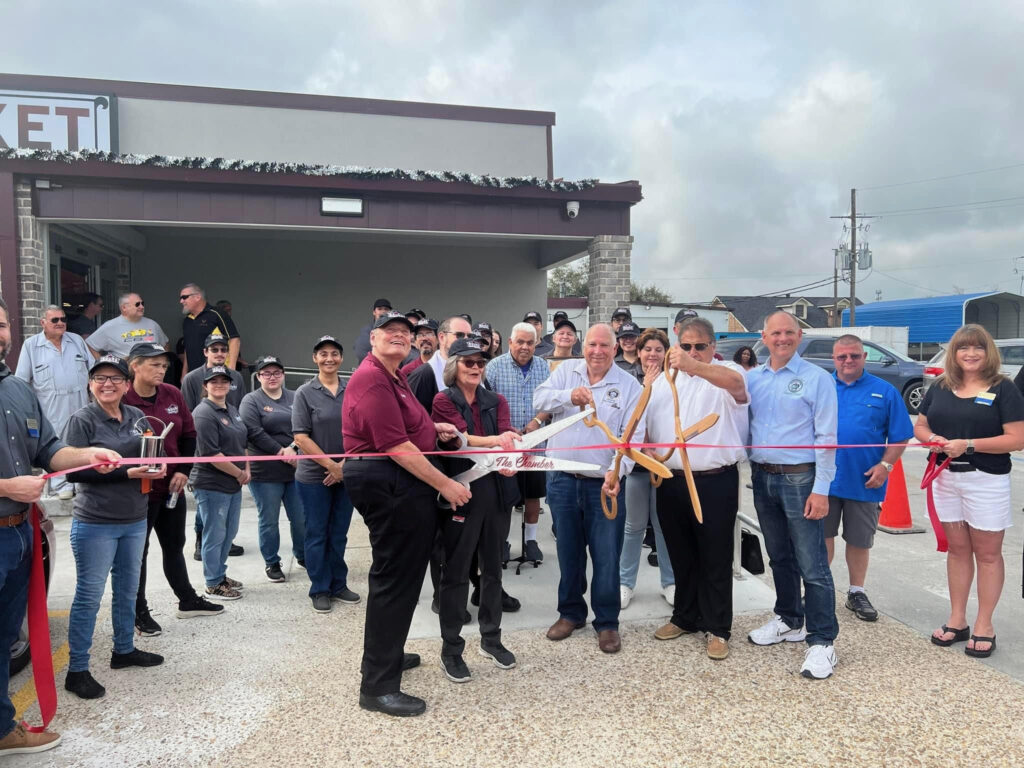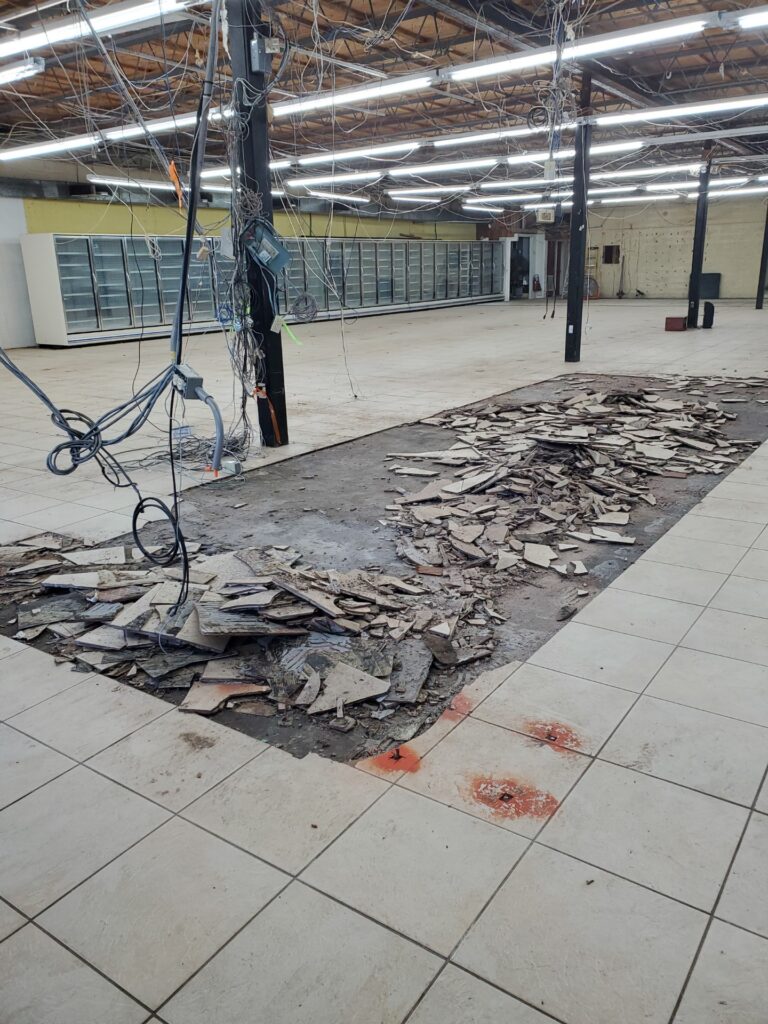This article was produced through the Environmental Justice Oral History Project, a digital hub that combines oral history, student journalism, podcasting, events, and research to document culture and environmental racism in the U.S. South.
Three years after Hurricane Ida struck the bayou communities of Louisiana's Terrebonne Parish, locals are still reeling from the damage. Several described the storm as the worst they'd experienced throughout their whole time living in the area. High-powered winds were the driving force of the storm's impact, but much of the recovery struggle community members have faced stems from problematic elements of the aftermath—including the time it takes to repair and restore infrastructure and the complexities of the procedure for obtaining recovery assistance.
"When you flood or you have a [storm], it might be a month or six weeks [without utilities]," said Dulac resident Craig Luke. "It's the downtime just from the cleanup, to get the power restored and those sorta things—a lot of times [the public] don't focus on that."
This is the case not just for Ida, but for any disastrous weather event. What's more, as Terrebonne residents pointed out, there are often solutions that locals believe the government could implement, but time and time again, it chooses not to.
Toll of Lost Infrastructure: Roads and Bridges
One substantial secondary gut punch to storm-impacted areas is the fact that after a storm, transportation routes might be lost to destruction or blocked by debris—and the costs of such damage are often substantial. According to FEMA, hurricane and flood damage to roads and highways alone exceeds millions or billions of dollars per year. The same is true for bridges. For example, it cost $1 billion to repair or replace bridges destroyed by Hurricane Katrina.
When roads and bridges are impacted, fixing them is not only monetarily costly, but it also takes time—especially in isolated and small communities such as Chauvin and Dulac, where resources tend to be limited. Repairs can take weeks, months, or even years.
For example, Scotty Bumm, assistant fire chief of the Grand Caillou Fire Department, said the department spent about a month clearing roads along the bayou before he was able to check on his own, more northern home. "You couldn't make it down the bayou because all the telephone poles, trees, and houses were all in the road," said Bumm.
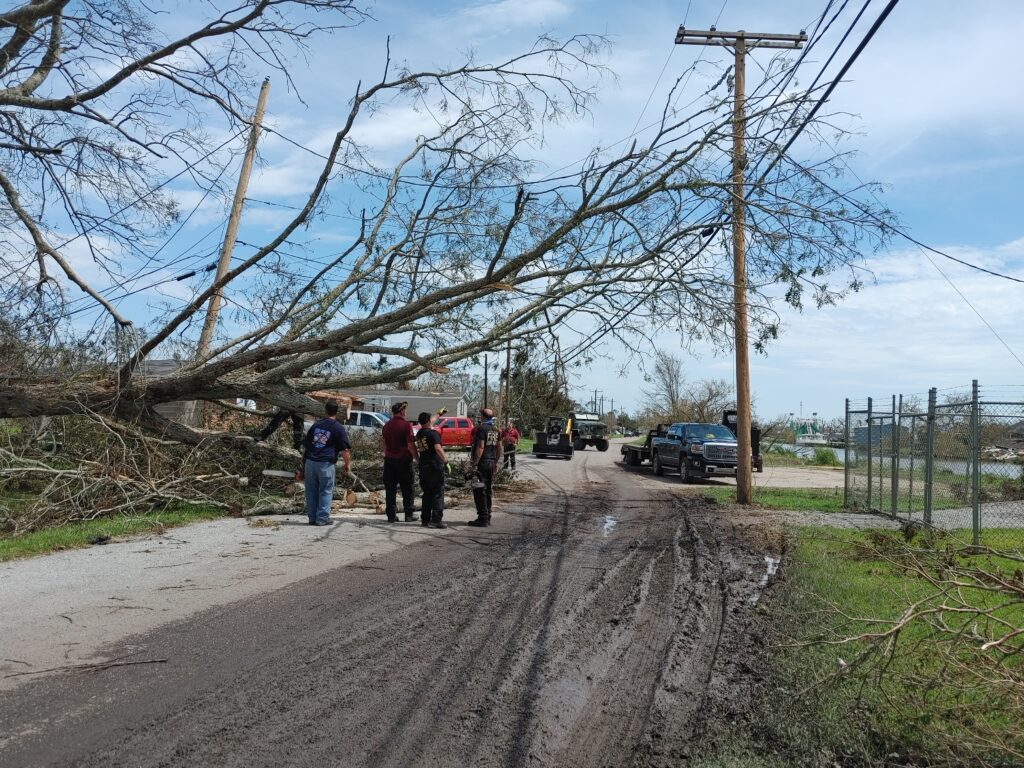
The night before the storm started to recede, former Little Caillou Fire Department fire chief Marty Thibodeaux said his team was out until around 2:30 a.m., trying to clear debris off roadways. Yet still, when they responded to a house fire in the early morning, they encountered obstructive debris. "We tore lights off the trucks, trying to get through wires and all kinds of crap," said Thibodeaux.
Some transportation infrastructure recovery is beyond local emergency services' capacity, too, so progress can take even longer. Such is the case with the Buquet Bridge, which served as a key connector of the east and west sides of Bayou Dulac.
Bumm said during Ida, a large boat in the bayou came unmoored, floated downstream, and smashed into the Buquet Bridge, pushing one side of the drawbridge upright. This means vehicles have had to use a bridge approximately 3.5 miles north of Buquet's location to cross the bayou. While that may not sound like much, in bayou distance, it's a lot, given speed and navigational limits. For fire services, Bumm said that's nearly doubled the response time to calls anywhere south of the bridge. As of May 2024, work to repair the bridge still hadn't begun.
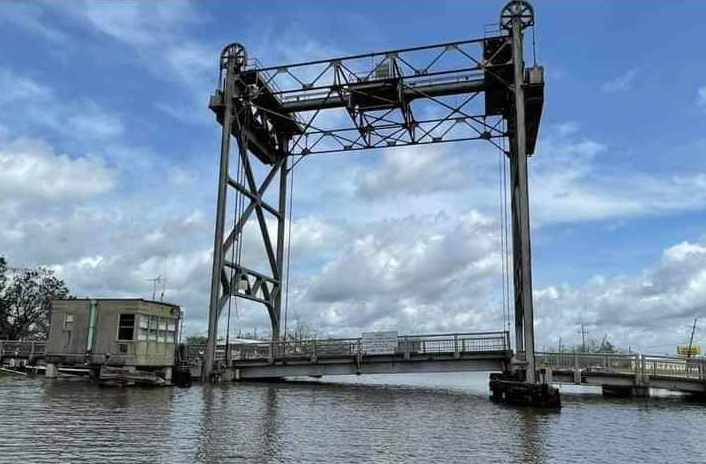
Since the 1930s, the federal government has made funds available to repair transportation infrastructure after unexpected disasters. However, only state and national government entities can apply, not local governments. And getting a state government to pay attention to a relatively isolated community's roads and bridges is a difficult feat.
"[With Katrina, people] didn't hear about the other places around New Orleans that were devastated," said Kellie Luke [no relation to Craig Luke]. "We're just small towns here—we don't mean a whole lot to, [for example], the New Yorkers."
Toll of Lost Infrastructure: Water and Electricity
After a storm, impacted areas often face the loss of both water and power.
"The storm finished hitting Monday and when we came back, it was horrifying," said Belinda Lebouef, who lives right near the Chauvin library and lost utilities for 32 days. "We [were] without water, freakin' gas, everything—it was bad."
Candace Chauvin, Dulac library branch manager, said some people experienced water loss for as long as three weeks post-Ida. These utility outages affected residents in their homes, as well as emergency services' capabilities. For example, with the house fire Marty Thibodeaux responded to at the end of the storm, the structure was engulfed, but there was no water coming out of the nearest fire hydrant.
"All the trees that went down ripped all the pipes out of the ground," said Thibodeaux. "Water [was just spilling] out."
They had to make do with the water stored in available fire trucks, which is about 500 gallons of water. And when sprayed, these gallons last for just eight or nine minutes, partly preventing the team from saving the house.
Dulac and Chauvin residents noted that the length of water outages varied in different parts of their communities, but at the same time, they said most of the bayou area did lose electricity for a month or more—a time in which 100 F temperatures hit the area.
"You go a doggone month before you can start running your air conditioning…and mold starts growin'," said Dulac resident Craig Luke. "That exacerbates the problem."
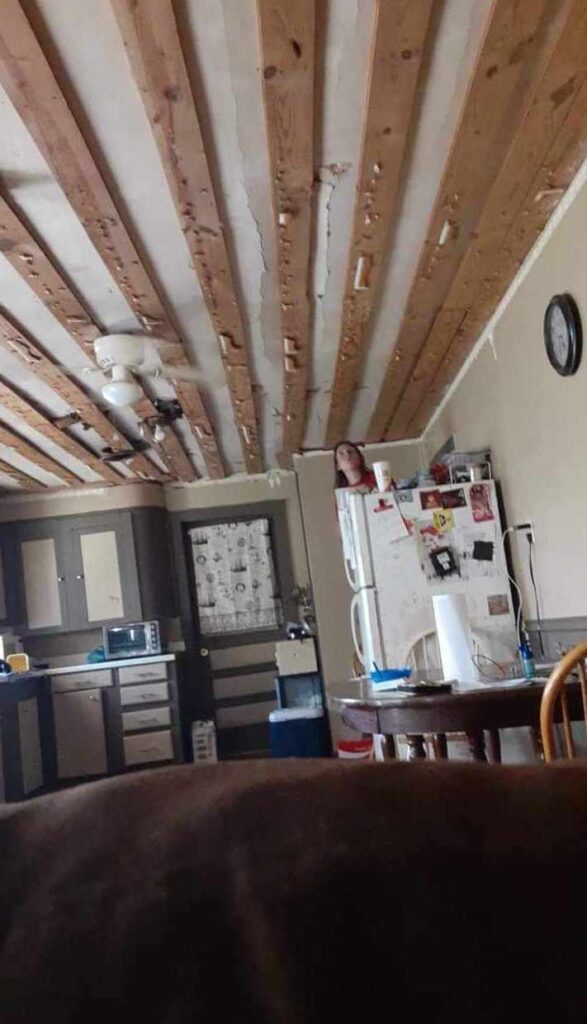
Mold can begin to grow on dampened surfaces within just a couple of days of a storm. And without AC to quickly dry up the surfaces, mold growth can induce or exacerbate asthma, or cause even more severe illnesses. What's more, without electricity, people are at risk of heat illness.
"With the heat and humidity [here], it is virtually unbearable to live for a month with no AC," said Luke.
People also lose communication lines, limiting their ability to check in with or receive support from loved ones, and limited internet access to stay on top of information and pursue supportive resources. Thus, disaster-impacted people are forced to begin their recovery from, effectively, a state of darkness.
Roadblocks to Recovery: Damage Assessment is Slow, Awarded Aid is Low
Even if disaster-impacted people can submit recovery aid paperwork (like FEMA applications) or complete other rebuilding tasks, the process is difficult to navigate.
There are a host of accessibility factors, such as language needs and digital or paperwork savviness. FEMA told Scalawag that it has several systems in place to address the language issue and that people can seek phone or in-person support for paperwork if they can't navigate it themselves or don't have internet access. However, the issues are nevertheless reported as common barriers to obtaining aid, at least according to Kristina Peterson.
Then there are bureaucratic obstacles.
People often struggle to get eligibility approval or adequate award amounts from FEMA. The applicants partly blame the lengthy wait period that often occurs before a supportive program sends a damage assessor to analyze a home or business—which FEMA states is a necessary step toward damage determination and provision. But with the wait time comes subsequent complications, leading people to take repairs into their own hands.
For example, with the Little Caillou Fire Department, Thibodeaux said per the insurance policy, they were supposed to apply long-term durability measures such as stilt elevation to rebuild one of the destroyed fire stations. However, they needed FEMA money for that particularly significant expense, and after a year and a half, they still had not received that aid. So, Thibodeaux decided that instead, they'd use their regular insurance money to replace the damaged station with a temporary facility, for the sake of resuming operations as soon and as best as possible, rather than not having that station at all.
"If we kept [waiting for] FEMA, we were not gonna have [anything] built," said Thibodeaux. "[I decided] I'm building a temporary fire station, and two weeks later, we had the building up, instead of jerking the chain with FEMA."
With that effort, all the department stands to gain from FEMA now is reimbursement for insurance deductibles and repair costs.
Belinda Lebouef and her husband experienced a similar situation. Her husband was anxious to restore his parent's house, but since he's a professional contractor, he began doing repairs himself shortly after the storm. Lebouef said he restored the roof and had nearly finished one bedroom when they heard FEMA contractors might come and tear up everything again. (However, FEMA told Scalawag that it does not have staff involved with the destruction or reconstruction of homes).

Chauvin resident Pamela Martinez said she didn't wait for a recovery aid entity's assessment before putting money into fixing her house, because the damage was too bad, and she urgently needed to rebuild. Then, when an assessor from Restore Louisiana, a particular funding source program for FEMA-awarded federal aid, came out to see the damage and assess if Martinez needed more money than what FEMA had provided, they claimed she hadn't put any FEMA money into the house. It was as if the house's present condition was the same as the day after Ida hit.
FEMA did not provide Scalawag with an average time-to-inspection but asserted that if possible, people are free to begin repairs immediately without waiting for inspection. They just need to "take pictures, make a list of losses, and keep receipts for all disaster-caused expenses for possible reimbursement from FEMA."
For folks who do this, such as Martinez and Lebouef, this documentation is a burden, dragging out and complicating the road to recovery aid.
"I [had] to prove all the money that I put on my house already, I had to get all my receipts, bank statements, and send all that," said Martinez. "Hopefully it's gonna be worth it once I'm done… but it's a lot of paperwork…a lot of red tape. It's a long process."
And it might not even lead to desired results. For example, Lebouef said they did all that work, and her in-laws still only received minimal reimbursement funds for the repairs, though she doesn't remember exactly what FEMA's justification was for not providing more aid.
Thibodeaux said that with one destroyed station, the insurer initially determined the building could be repaired, so didn't give as high a pay-out as they would have for a rebuild. But then a FEMA assessor determined the damage was more than half the building value, so the department successfully sued for a better pay-out. Kellie Luke said she was similarly low-balled by her insurance, further indicating that inaccurate pay-out decisions are common in disaster recovery.
Discrepancies in pay-out are known to occur, too, especially along racial lines. A 2018 study by Rice University sociologist James Elliot found that white people in disaster-struck communities saw personal wealth increase from disaster aid while Black, Hispanic, and Asian people in disaster-struck counties lost wealth after disasters and whatever FEMA aid was offered. That study was even cited in a 2021 report by FEMA's National Advisory Council, a group created after Hurricane Katrina to examine emergency management practices. FEMA has taken steps to address this problem, such as creating a training program to target individual staff-level bias, but improvement across all levels is ongoing.
While people await aid determinations and receipt, one service FEMA provides is Direct Temporary Housing Assistance, commonly called the trailer program. Mobile homes are provided to residents who lost their homes in a disaster. While this enables residents to stay on-site through home repairs, elements of the program are highly criticized.
In particular, Terrebonne residents said the trailers are only free for some time, and then people must pay to rent them. But the prices are too high, and the time period of free use is too short for people to get back into their homes. What's more, eligibility is reassessed monthly for homeowners and biweekly for renters (pre-storm status), so users face a constant risk of losing their temporary home. The program also has a checkered reputation when it comes to safety. Notoriously, post-Katrina trailers were found to have toxic levels of formaldehyde, linked to structural flaws including poor ventilation design and cheap materials.
Roadblocks to Recovery: Unclear, Unnecessary, and Inconsistent Policies
Still another logistical struggle more directly involves insurance complexities. That is, recovery aid often comes with a condition that recipients must purchase flood insurance, and implement adaptive architectural features in home rebuilds—namely, elevating their homes to a certain height.
Bayou locals said this is a financial burden that many can't afford—especially those on fixed incomes (like elderly folks) and those not used to paying insurance because they owned their homes outright. Residents also feel that by now, it's an unnecessary stipulation, since most homes already are well-elevated. Also, over the last couple of decades, infrastructure that has reduced the threat of flooding has been erected. For example, pieces of the Morganza-to-the-Gulf project—which is a long-planned Army Corps of Engineers project to install levees, floodgates, and other such water control structures between New Orleans and the coastal bayous to the South—intended to better manage floodwater, and thereby mitigate storm damage. If the levees work, that coupled with elevated homes means better outcomes for homes.
"Even if we have a catastrophic flood, the likelihood of some of our homeowners flooding inside their homes again is so low," said Candace Chauvin.
Craig Luke added: "We've got people paying flood insurance that are never gonna collect. I'm 10 feet off the ground…I just cannot see me flooding."
Luke also stressed that elevation measures don't protect from wind, which is just as likely as floodwaters to be the driving force of storm damage—and in fact, was Ida's main destructive characteristic. Luke suggested that because of that, insurers and the government should spend less energy worrying about home elevation levels and more energy supporting wind fortification measures.
A third objection residents make about recovery aid being tied to insurance is that there is a lack of consistency with insurance requirements, between different disaster recovery programs such as FEMA, Restore Louisiana, Small Business Administration Loan, and nonprofit entities.
Candace Chauvin said some programs might require home insurance and flood insurance, some only flood insurance, and some might require other insurance categories. These variations confuse people who are seeking aid from any programs, making them hesitant to apply for the help they need.
"They wanna know the stipulations before they even apply, so they know they're not gonna get screwed over in the end," said Chauvin. "[That] really [puts] a strain on a lot of people."
Regarding height requirements, not only do they vary between recovery entities, but residents say they keep changing over time, and no one seems sure who's supposed to be the true authority on such a building code. Kellie Luke thinks it stems from the state.
"The state is so wishy-washy about their own rules," said Luke. "Some people say you go up 10 feet… now FEMA said 14…When you're up 10 feet already, that's pretty high."
Locals See Untested Solutions
Much of the harm storms cause is due to resource limitation-based lag time in debris removal and utility restoration, inequities in obtaining FEMA recovery aid, or other bureaucratic flaws that become top of mind after the initial disaster.
While some of those issues may be difficult to systematically solve, residents offer solutions for some problems. Craig Luke, for example, said that in terms of insurance pricing and consistent policies, he wants increased transparency on how flood insurance costs are decided at the federal level (by the National Flood Insurance Program) so that state and local governments could establish clearer and more sensible standards.
Luke and other community members especially want those figures to be updated (and decreased) to reflect the latest safety measures that both homeowners and communities have implemented, like levee systems and home fortification. In conjunction, Luke advocated for Louisiana to deploy a program that Florida has introduced, My Safe Florida Home, through which financial aid is given to residents to fortify roofs against wind damage. Luke describes this fortification as installing metal roofing materials. More comprehensively, it's a multifaceted design strategy involving harder panel material (or "sheathing"), sealing and strengthening structural edges of a roof, and other elements.
Given that the government hasn't exactly embraced such solutions, bayou residents feel like people in power would rather see them leave their community than help it survive. Despite that, people continue to fight to stay—in Dulac, Chauvin, and other vulnerable communities around the country.
"They can't tell me to relocate," said Martinez. "You're not gonna push me out."
Residents don't want to leave, or they can't, and they feel staying to rebuild wouldn't be so hard without issues such as under-resourced or mismanaged immediate response and the excessively complex bureaucratic obstacles for obtaining recovery assistance. Craig Luke said government decisions have exacerbated problems, and Kellie Luke said only the government can eliminate some problems—especially within the recovery process.
"The red tape…it's the government. Our community can't fix that," said Kellie Luke.
But the community is doing its part. Craig Luke points to one of the first and most significant steps the parish community took: funding Morganza to the Gulf levees for itself.
"[Federal] funding was so slow that we just [decided] as a parish, as a community to tax ourselves," said Luke. "We're doing things."

